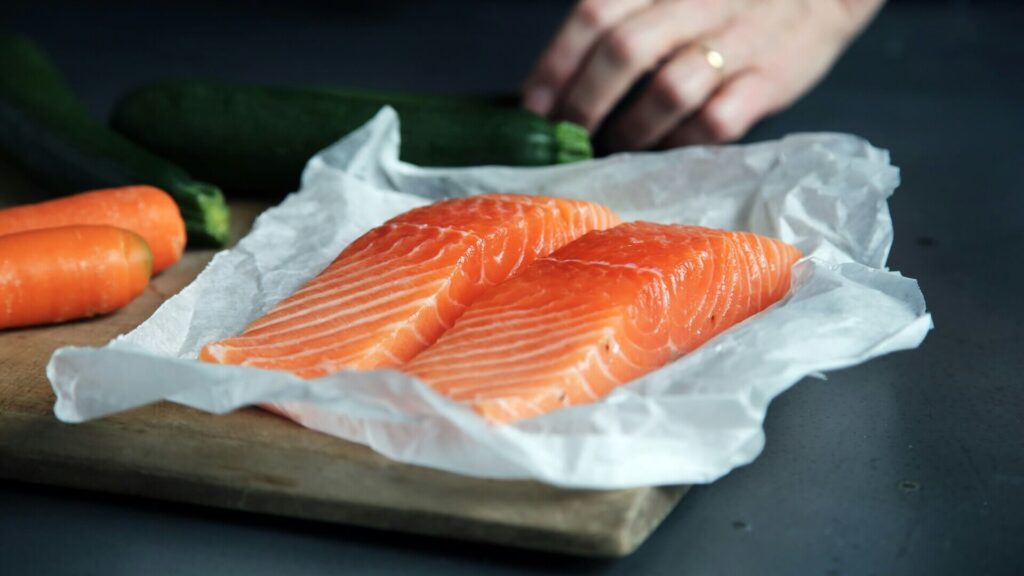
Low-Fat Products: Balancing Taste and Health
In all aspects of food development, taste, and health are the two hallmarks of great food. Although these two details may only sometimes meet, many recipe testers, food manufacturers, and chefs aim to find the perfect meeting place between flavor and nutrition. Low-fat products are one of the most common ways this is achieved in […]
Read MoreIn all aspects of food development, taste, and health are the two hallmarks of great food. Although these two details may only sometimes meet, many recipe testers, food manufacturers, and chefs aim to find the perfect meeting place between flavor and nutrition. Low-fat products are one of the most common ways this is achieved in food manufacturing, and there are a large variety of solutions to make commonly fatty foods low-fat, whether for health or flavor balance purposes.
What is Fat?
Dietary fat is present in nearly all foods and is one of the primary macronutrients that the body needs to function, next to carbohydrates and proteins. Fats are much more calorically dense than carbohydrates but slow to digest due to their complex molecular structure. As such, eating large amounts of fat can lead to excess calories in the system that aren’t being used, potentially leading to weight gain. Fats aren’t so simple, however, and making a low-fat product means understanding just what dietary fats do for the product in the first place.
How Different Fats Affect Taste and Health
All in all, food has four major categories of dietary fat: Saturated fats, trans fats, Monounsaturated fats, and polyunsaturated fats. These fats represent a unique chemical structure, leading to unique physical properties.
Saturated Fats
Saturated fats come from animal products, such as beef, pork, full-fat dairy, and eggs. Saturated fats can also be found in tropical oils like coconut or palm oil! Saturated fats are typically solid at room temperature, commonly called “solid fats.” Saturated fats are frequently connected to high cholesterol levels, and unmonitored or excessive consumption of saturated fats can lead to heart conditions.
Trans Fats
Trans fats are naturally occurring and artificial, with most trans fats found in processed hydrogenated oils. Due to their inexpensive and straightforward-to-produce qualities, trans fats are frequently added into processed foods as a flavorful and affordable fat, though often they can end up being little more than filler. Trans fats are commonly connected to high cholesterol levels and risk for type 2 diabetes, so consumption of them should be minimal. No low-fat product should contain trans fats or saturated fats.
Monounsaturated Fats
Monounsaturated fats are one of the healthier fats, named for their single unsaturated carbon bond at the molecular level. These fats and oils are typically liquid at room temperature and turn solid when chilled, much like olive oil, canola oil, or peanut oil. Unlike saturated and trans fats, monounsaturated fats are both tasty and healthy, helping to reduce harmful cholesterol levels and being high in Vitamin E, essential for clearing the body of toxins.
Polyunsaturated Fats
Polyunsaturated fats are much like their counterpart but with more than one unsaturated carbon bond at the molecular level. Oils in the polyunsaturated fat category include soybean oil, fish oil, and corn oil, and are commonly celebrated for their cholesterol-lowering qualities and high levels of omega fatty acids.
Regarding culinary applications, each of these different fats brings a unique effect to the ingredient list. For low-fat food products, it is best to minimize unhealthy fats like saturated and trans fats, focusing instead on the equally tasty and healthful Mono- and polyunsaturated fats.
What is “Considered a Low-Fat Food Product”?
While there is no universal definition for low-fat food, the general guideline suggests that a diet qualifies as low-fat when 30% or fewer calories come from fat. More specifically, for every 100 calories consumed from food, less than 3 grams should come from fat. Luckily, many produce options already qualify as low-fat: Vegetables, fruit, beans, even skinless meat, and egg whites are considered low-fat food options. Regarding commercial food products or food consumed more for its flavor than its nutrition, low-fat food can be a unique debacle requiring a unique solution.
Different Kinds of Fat Replacers
A replacement must be found to lower the quantity of various fats in food, which bring unique combinations of flavor, texture, structure, and moisture to the ingredient list. Food chemists have found a collection of alternatives to replace fat in recipes, allowing recipe testers to find a way to make their products low-fat.
Carbohydrate-based
Carbohydrate-based fat replacers are typically derived from corn, cereal, wheat, and other starchy grains. Carbohydrate-based fat replacers, such as cellulose, gelatins, gums, and dietary fibers, are often on grocery store shelves.
Protein-based
Protein-based fat replacers are derived by modifying food proteins, primarily used to lower caloric content in a fatty product. Proteins such as egg white or milk whey create easily digestible, low-calorie fat replacements high in amino acids.
Fat-based
Fat-based fat replacers seem counterintuitive but serve to lower the caloric content of a fatty product by introducing a lower-calorie fat. Fat-based replacers are derived by replacing triglycerides in vegetable oils, which alters their molecular complexity and caloric content in various ways.
Each of these different fat replacers brings benefits and obstacles to developing a low-fat product, but they effectively reduce the fat content in prepared foods.
The Perfect Flavors for Any Recipe
Your low-fat health product doesn’t have to come at the expense of taste. Using high-quality flavor chemistry and decades of experience in ingredient development, Metarom USA has all the functional flavors and fat replacers you will need to develop the perfect health product. Metarom’s flavor experts will work directly alongside recipe developers to find precisely what ingredients will work and the form factor they need to shine. Contact Metarom USA to find the secret ingredient to any profile, from flavored oils to vanilla pastes and even flavored fat replacers.



